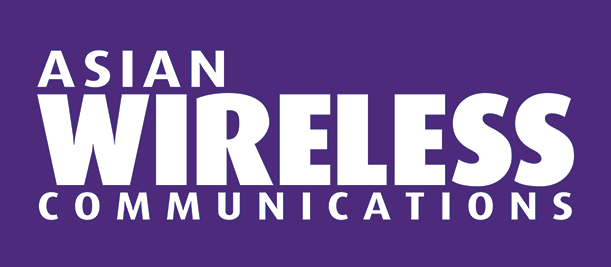03 December 2024

Glenn Katz, Chief Commercial Officer, Telesat
The Asia Pacific region embodies a rich and diverse mix of peoples, cultures, geographies – and economic development. While we often associate Asia with digital sophistication, there have long been big differences between advanced countries like Japan, South Korea, Singapore and Taiwan, and rural and developing areas such as are found throughout many parts of Southeast Asia. The United Nations Conference on Trade and Development (UNCTAD) Asia-Pacific Trade and Investment Report 2023-2024 noted that while the Asia region saw a global-leading 9% growth rate in digitally deliverable exports from 2015 to 2022, only six economies made up 85% of that amount with the least developed countries representing less than 1% combined.
Economic growth depends on connectivity
That situation is changing. The World Economic Forum (WEF) noted that Southeast Asia has a promising outlook for long-term market growth, with the digital economy representing as much as $600 billion in gross merchandise value by 2030. But reaching that potential requires a big increase digital market participation, with WEF acknowledging that the gap between the demand and supply of digital products and services outside of Asian metro areas is growing. Basic internet access is simply not enough for people to meaningfully participate in the digital economy, risking a widening divide.
Lack of internet in the home impacts education and work prospects. A report from the Association of Southeast Asian Nations (ASEAN) noted that only 53% of children in rural areas have a home internet connection versus 72% of those in urban environments. Access is lower in less developed Southeast Asian countries where far fewer homes have broadband internet. And while 66% of individuals in the Asia Pacific region use the internet, the high cost of accessing digital networks limits use in these less developed regions.
Telecommunications providers are working to overcome these barriers as quickly as possible. Research and Markets projects that fixed broadband penetration (27.4 subscribers per 100 inhabitants) will reach an estimated 21.6% of the region’s population this year, growing to 23.6% in 2029. And fixed internet users will expand from 3.3 billion in 2024 to 3.9 billion in 2029.
Practically speaking, realising that positive forecast cannot be achieved solely by installing more fibre-based terrestrial networks. Given the challenging and vast Southeast Asian terrain that encompasses mountains, dense forest, grasslands, farmland and even many remote islands, efforts at terrestrial connectivity pose prohibitive logistical and cost challenges.
Fibre can also be at unexpected risk. For instance, in March 2024, underwater cables in the Red Sea belonging to four major telecom networks were cut, resulting in significant disruptions to communications and the internet. While the cuts occurred far away from Southern Asia, the 25,000km Asia-Africa-Europe cable system connecting Southeast Asia to Europe via Egypt was damaged. In June 2024, more cables were cut, although the land-based incident was much faster to restore than was the underwater issue. The disruption to the internet, combined with a required temporary alteration to trade routes, imposed increased operational costs and delays in the delivery of goods and services, resulting in an economic slowdown with a several month recovery time.
Satellite technology changes the game
Fortunately, advanced satellite communication (SATCOM) is emerging as a viable and affordable alternative option. Previously, SATCOM was approached as a last resort for reaching remote populations; it was considered too complex and slow to implement – and requiring too much satellite technology-specific expertise to successfully pull off. But this impression is rapidly shifting. Analysys Mason (formerly NSR) forecast for nearly 9,000 satellites to be manufactured and launched in the Asia region, generating cumulative revenue of US$139.2 billion over the next 10 years (23% of the overall market). And ABI Research projected that satellite communications subscriptions in Southeast Asia will hit more than 1.8 million by 2028, driven by governmental policy measures and collaborative efforts with service providers and satellite operators.
The introduction of low Earth orbit (LEO) satellite networks, fueled by ubiquitous, high-throughput, low-latency connectivity, and coupled with disruptive pricing, are entirely changing the space-based connectivity equation. New LEO constellations from Starlink, Kuiper, Telesat Lightspeed, OneWeb and Kepler each have purpose-built designs to serve either narrowband IoT services, consumer broadband, or enterprise broadband connectivity. A key advantage of LEO technology lies in its ability to provide ‘virtual fibre’ backhaul connectivity to extend the reach of non-terrestrial networks (NTNs) to remote or underserved areas where it is difficult or cost-prohibitive to deploy fibre.
The low latency connectivity of LEO networks means telecommunications service providers will be able to provide SD-WAN and IP services, cloud connectivity, and advanced applications beyond the footprint of their core terrestrial networks. This however will depend on the frictionless integration of satellite connectivity. And that requires interoperability.
The need for a standards-based approach
Previously, interoperability was not possible due to satellite networks’ proprietary characteristics. The deployment process was manual and labor-intensive, required in-house satellite expertise, and could extend over weeks or even months. This situation has changed significantly as several satellite operators and ground system providers adopt what are known as MEF standards.
MEF (formerly Metro Ethernet Forum) is a non-profit industry forum of technology providers seeking to develop standards, certifications and application programming interfaces (APIs) in empowering enterprise digital transformations. The Forum promotes the MEF Standards for Layer 2 Carrier Ethernet, which support interoperability among network operators (including satellite-based), service providers, vendors and customers.
Leveraging MEF standards unlocks the potential of terrestrial and NTN service orchestration. NTNs need to be fully API-driven and require standards-based automation between ecosystem players at both business and operational levels. MEF has developed standards-based Lifecycle Service Orchestration (LSO) business and operational process APIs that uniquely provide the high fidelity, plug-and-play interoperability, and extensibility required by service providers to ‘invest once’ and efficiently scale implementations with many partners and services. In this way, Telecom service providers will now deliver standard connectivity using Carrier Ethernet services over satellite in the same way that they deliver all their other enterprise services.
Beyond just MEF, there is increasing support for adopting standards-based approaches to build next-generation SATCOM capabilities while containing costs. Industry and government leaders must commit to partnering on standards that will more effectively and efficiently pave the way for satellite innovation.
One important partnership is already underway: in July 2023, the Global Satellite Operators Association (GSOA) announced that satellite and mobile industry professionals have been working for years to bring satellite into mobile standards, resulting in the 3rd Generation Partnership Project (3GPP). 3GPP will support the use of non-terrestrial networks (NTN) in these standards, to enable full interoperability between satellite and terrestrial – including mobility procedures across both network components. This will allow mass-market smartphones and IoT devices to connect seamlessly with satellite networks when out of range of terrestrial connectivity.
Several telecom operators have already signed agreements with satellite constellation operators to support direct-to-device service. There is a wide range of capabilities utilising both terrestrial and mobile satellite spectrum enabled through these partnerships. For example, AST Space Mobile has partnered with AT&T and Verizon to provide voice and data services; Starlink D2D is working with T-Mobile on direct to device SMS and messaging; Apple is partnering with GlobalStar on emergency and iMessaging; Lynk has preliminary partnerships with 40 mobile network operators.
The project will especially benefit rural, unserved and underserved areas in an effort to dramatically increase online access. In the near future, 3GPP is expected to improve uplink and downlink connectivity between satellites and mobile devices, while enhancing mobility between non-terrestrial and terrestrial networks through smoother, quicker handovers.
Reaching the edge
MEF standards-based satellite networks are also needed to support effective edge computing – where devices like laptops, tablets, smart phones, wearables and internet of things (IoT) sensors process data at the ‘edge’ of the network. As more devices are used in industries that comprise a large part of the Asian economy, more edge-processed data will need to be transferred either to other edge devices or to another location such as a centralised or headquarters facility.
Agriculture is a prime example. Low cost, sensor-based IoT devices are poised to increase agricultural production, with millions of devices across enormous tracts of land generating volumes of data on water usage, nutrition density and other environmental factors affecting crop growth. As more farms will benefit from implementing autonomous IoT, applications like on-the-ground video surveillance and tracking the status of new autonomous farm vehicles in motion will greatly expand high data rate satellite broadband implementations.
With manufacturing the largest contributor to Southeast Asian gross domestic product (GDP), this sector represents another massive edge computing requirement. Big Data, enormous data sets that when properly analysed reveal critical trend and pattern insights, will play an increasing role in better measuring, standardising and optimising manufacturing production processes. Analysis of Big Data from connected edge devices will enable efficiency and cost improvements in areas like inventory management, equipment maintenance status and even product quality.
Supply chain connectivity is also critical both to manufacturing and to international merchandise trade, another huge component of ASEAN GDP. The World Bank noted that the 24/7 trade propelling the Asian economy is dependent not only on transport systems (which are also heavily digitised), but on telecommunications, financial markets and information-processing. Consequently, regions without adequate connectivity infrastructure will be at a distinct competitive disadvantage in the global marketplace.
An over-riding factor to all of these and more industry sectors is climate. In April, the World Meteorological Organization reported that Asia remained the world’s most disaster-affected region in 2023, heating up faster than the global average and suffering increased casualties and economic losses. Not only do growing climate-related disasters disrupt the industries upon which the Asian economy relies, they pose greater societal risks to public health and well-being. It is now essential for data related to climate, weather, water and other environmental factors to be continually collected from urban and remote areas, analysed and used for modeling future projections and impacts.
Even with all of these compelling needs, getting adequate internet coverage to rural and remote locations is challenging and expensive; costly fibre-based solutions to link the entire region will simply not be an option. Fortunately, the growth of advanced LEO satellite constellations now offers the capability to enable a space-based mesh network to support modern, cloud services with guaranteed resiliency. Such networks will deliver carrier ethernet-level performance at the lowest latency and highest speed that large-scale edge computing environments require. And that level of connectivity can support collaborative edge operations anywhere across the Asian continent.

Rising to a dynamic and promising future
There is great opportunity for tech industry companies and other enterprises to realise the dramatic growth potential that exists throughout the entire, diverse Asian economy. To take the next critical steps of a digital transformation, SATCOM providers are more than ready to collaborate with government and telecommunications partners throughout Asia to develop and implement standards-based approaches. With this, all corners of the Asian continent will emerge as an increasingly connected source of innovation – and inspiration.






